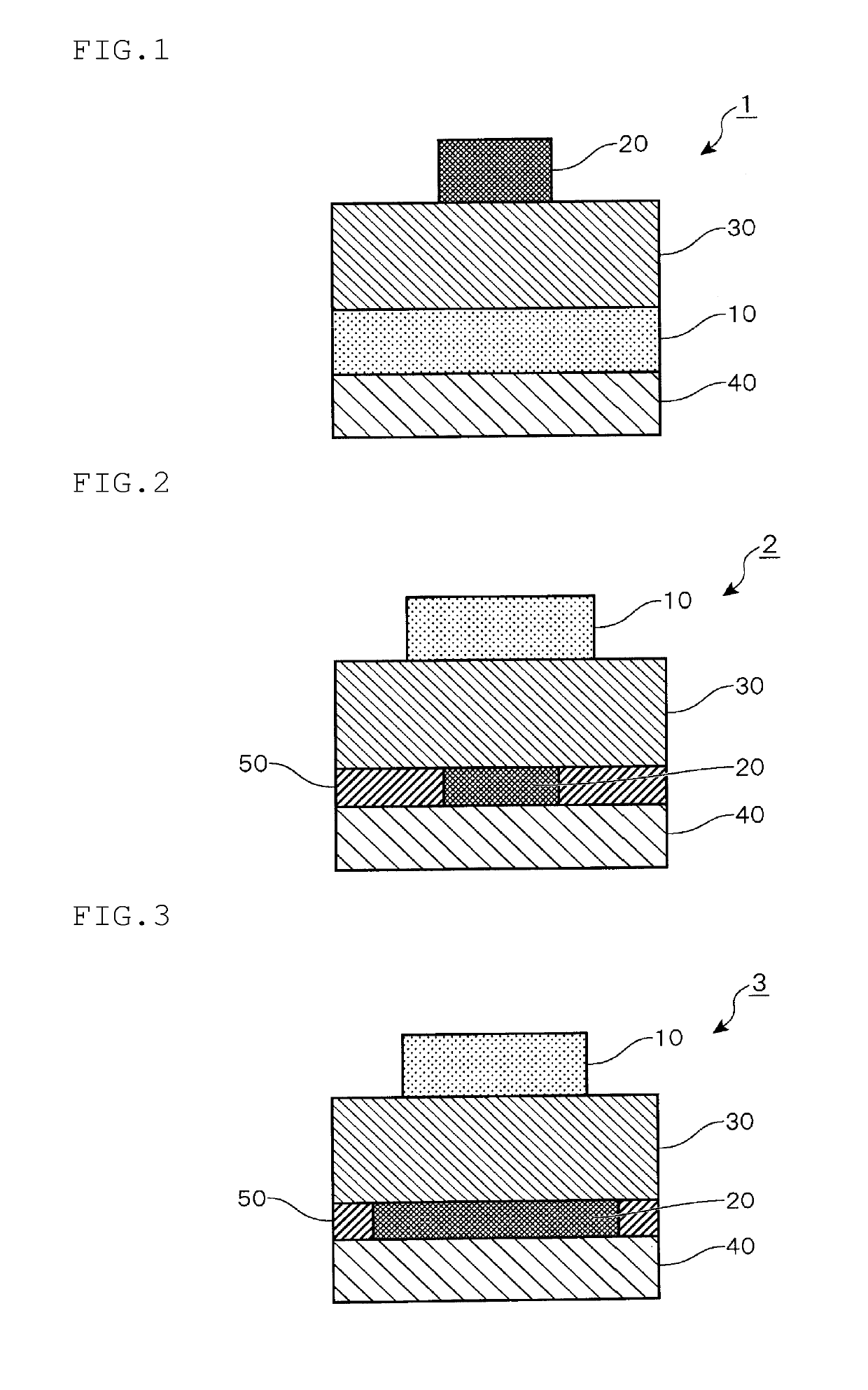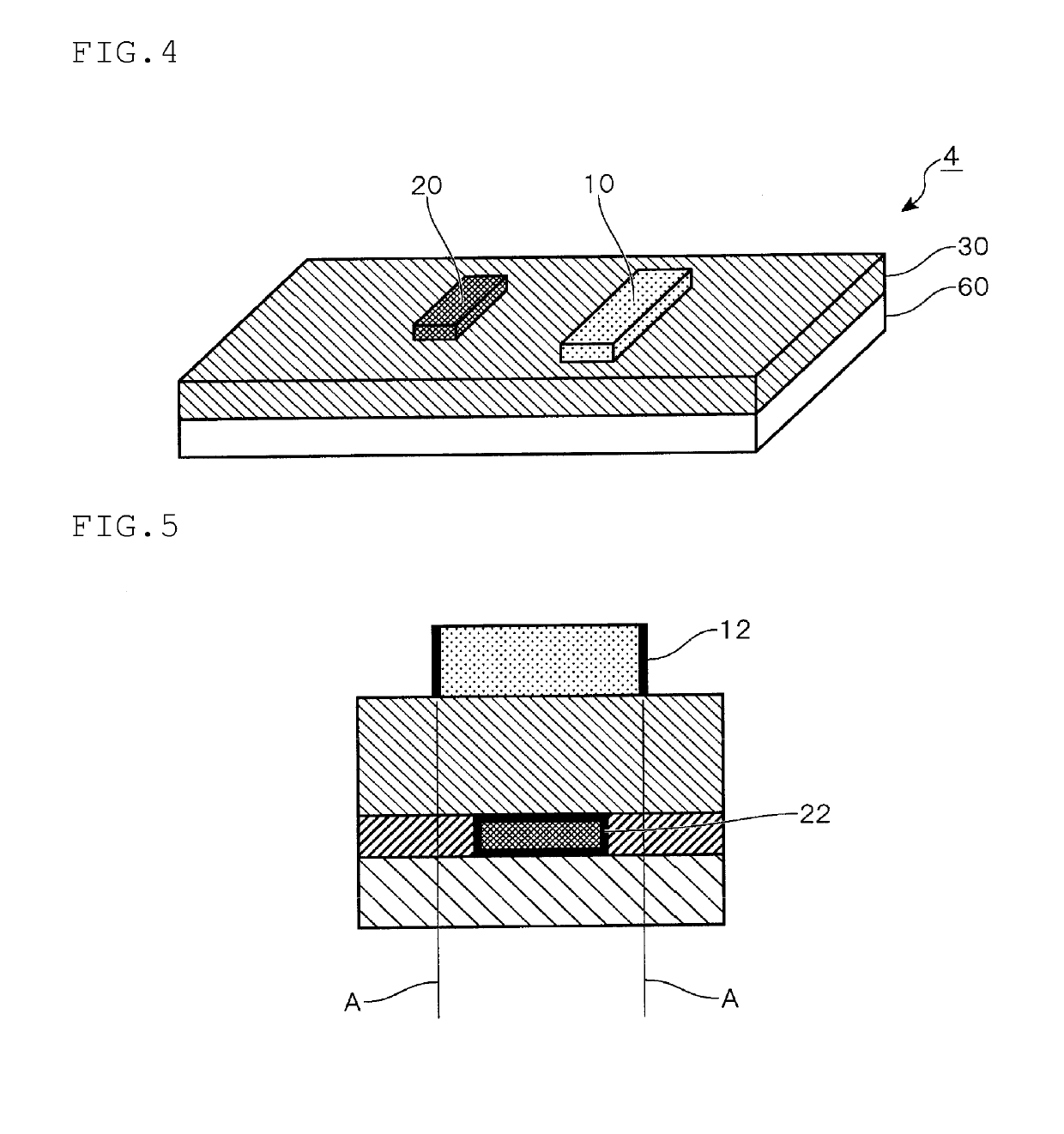Semiconductor device and electric apparatus using same
a technology of semiconductor devices and electrodes, applied in the direction of semiconductor devices, electrical devices, basic electric elements, etc., can solve the problems of difficult to achieve epitaxial growth of monocrystals, limited substrate selection, and difficult to use, etc., to reduce backward leak current, and use schottky electrodes easy
- Summary
- Abstract
- Description
- Claims
- Application Information
AI Technical Summary
Benefits of technology
Problems solved by technology
Method used
Image
Examples
example 1
[0189]An n-type Si substrate having a resistivity of 0.001 Ω·cm (a diameter of 4 inches and a thickness of 250 μm) was disposed in a sputtering apparatus (E-2005 manufactured by Anelva Corporation), and the following laminated electrode was formed. Additionally, a substrate back surface was treated with 100 nm of Ti / 50 nm of Au to eliminate a contact resistance with a prober at measurement. Initially, a film of Ti was formed in a thickness of 15 nm with DC of 50 W in an Ar atmosphere, next a film of Pd was formed in a thickness of 50 nm with DC of 50 W in the Ar atmosphere, and finally, as a Schottky electrode, a film of PdO was formed in a thickness of 20 nm with DC of 50 W in a mixed gas atmosphere of Ar and O2.
[0190]Next, this substrate was set together with an areamask for a semiconductor in a sputtering apparatus (CS-200 manufactured by ULVAC), and as a withstand voltage layer (a semiconductor layer), a film of InGaZnO was formed in a thickness of 200 nm (In:Ga:Zn (atom ratio)=...
examples 2 to 5 , 9 , 18 and 19
Examples 2 to 5, 9, 18 and 19
[0224]The procedure of Example 1 was repeated except that film forming conditions were changed as shown in Tables 2-1 and 2-2, to manufacture and evaluate semiconductor devices. Tables 2-1 and 2-2 show the results. Furthermore, the semiconductor devices of these examples satisfied the formula (I).
example 6
[0225]The procedure of Example 1 was repeated except that film forming conditions were changed as shown in Table 2-1, to manufacture and evaluate a semiconductor device. Table 2-1 shows the result. Additionally, the semiconductor device of this example satisfied the formula (I).
[0226]In this example, a material of the ohmic electrode of Example 1 was changed from Mo to Ti.
[0227]When the L was evaluated, contrast of a TEM image containing InGaZnO was shorter than 200 nm due to extraction of oxygen from the Ti electrode, and it was confirmed that a thickness of a semiconductor layer was 180 nm.
PUM
 Login to View More
Login to View More Abstract
Description
Claims
Application Information
 Login to View More
Login to View More - R&D
- Intellectual Property
- Life Sciences
- Materials
- Tech Scout
- Unparalleled Data Quality
- Higher Quality Content
- 60% Fewer Hallucinations
Browse by: Latest US Patents, China's latest patents, Technical Efficacy Thesaurus, Application Domain, Technology Topic, Popular Technical Reports.
© 2025 PatSnap. All rights reserved.Legal|Privacy policy|Modern Slavery Act Transparency Statement|Sitemap|About US| Contact US: help@patsnap.com


